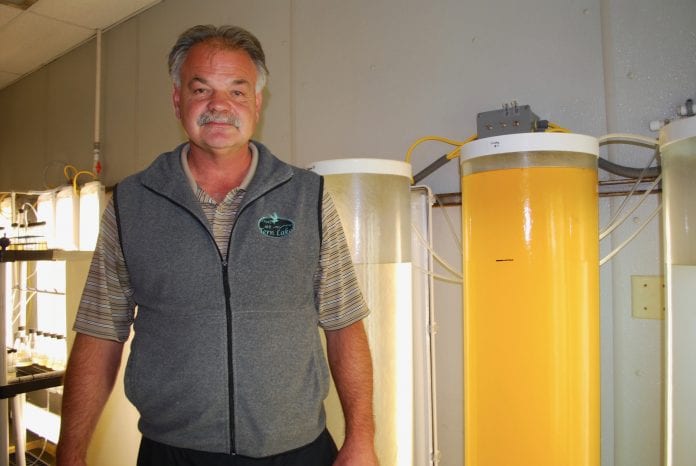
The Alutiiq Pride Shellfish Hatchery and the NOAA Fisheries Lab in Kodiak are partnering again this year for the final experimental release of juvenile red king crab.
This has been an eight-year project with a coalition of industry and community groups, Chugach Regional Resources Commission, University of Alaska, NOAA Fisheries, all part of (Alaska King Crab Research, Rehabilitation and Biology program formed to develop tools for king crab enhancement. The goal of the project is to see if hatchery produced king crab can be used to bring back localized fisheries unfished in most regions for over 30 years. The project has accomplished many milestones including efficient production of juveniles, research on juvenile behavior and small out-planting releases.
“We think we are ready for ramping this up beyond the experimental phase,” said Jeff Hetrick, director of the hatchery.
The hatchery contracts Kodiak fishermen to collect brood stock from Alitak Bay off the southern tip of Kodiak Island and transport those crabs to Kodiak for acclimation and eventually shipment to the Shellfish Hatchery in Seward.
The overigerous (egg bearing) female crabs are held throughout the winter in tanks until they begin to release their larvae in March. Each female has approximately 150,000 larvae. The crab larvae are pooled for genetic diversity and fed a diet developed at the hatchery. The crabs go through a serious of metamorphological changes, which takes about two months until they reach their adult form of about 3 mm.
“We feel comfortable getting 30 percent survival from hatcher throughout stocking,” Hetrick said. “The crab larvae and early juveniles perform very well in the hatchery, but once they reach the second juvenile stage they are extremely cannibalistic.”
“We try to provide them habitat to hide and we feed them to satiation, but whenever they molt to their next stage, which takes approx. a month, they are very vulnerable and cannibalism is high,” he said. “Fortunately, through our research, we have discovered that our survivals for young juveniles are the same as if we were to hold them and grow them to a larger size. Research on crabs is being done around the world but mostly focused on the mud crab in Asia and a few other species in South America but the Alutiiq Pride Shellfish Hatchery is the first to raise significant numbers of red kind crab.”
The juveniles are then shipped to Kodiak, where the NOAA staff out-plants these crabs in designated plots near Women’s Bay. NOAA staff, using SCUBA, monitors the sites throughout the summer season.
“In this way,” said Bob Foy, director of the Alaska Fisheries Science Center lab at Kodiak. “We get a good idea of what the predation rate is on the crabs; how fast they grow and how quickly they disperse.”
This project has been funded by industry contributions, research grants, NOAA Aquaculture money and funds dedicated by the Chugach Regional Resources Commission.
“We feel this project is important to all residents in out coastal communities and we’re proud to be leading this effort,” said Bob Heinrichs, a longtime director at CRRC. “We’d like to bring back some red kind crab to fill our pots like back in the ’70s.”
AKCRABB is hoping for funding to complete an economic feasibility project and anxiously awaiting legislation to pass in Juneau allowing this type of work to move from the research to production.
“It has taken a lot of work from lots of entities to get the technology to this point,” Hetrick said. Now we need to use it.
Chelsea Kovalcsik works for Chugach Regional Resources Commission and the Alutiiq Pride Shellfish Hatchery, a division of CRRC. The mission of CRRC is to promote tribal sovereignty and the protection of the subsistence lifestyle through development and implementation of tribal natural resource management programs, to assure conservation, sustainable development and stewardship of natural resources in the traditional use areas of the Chugach Region.














